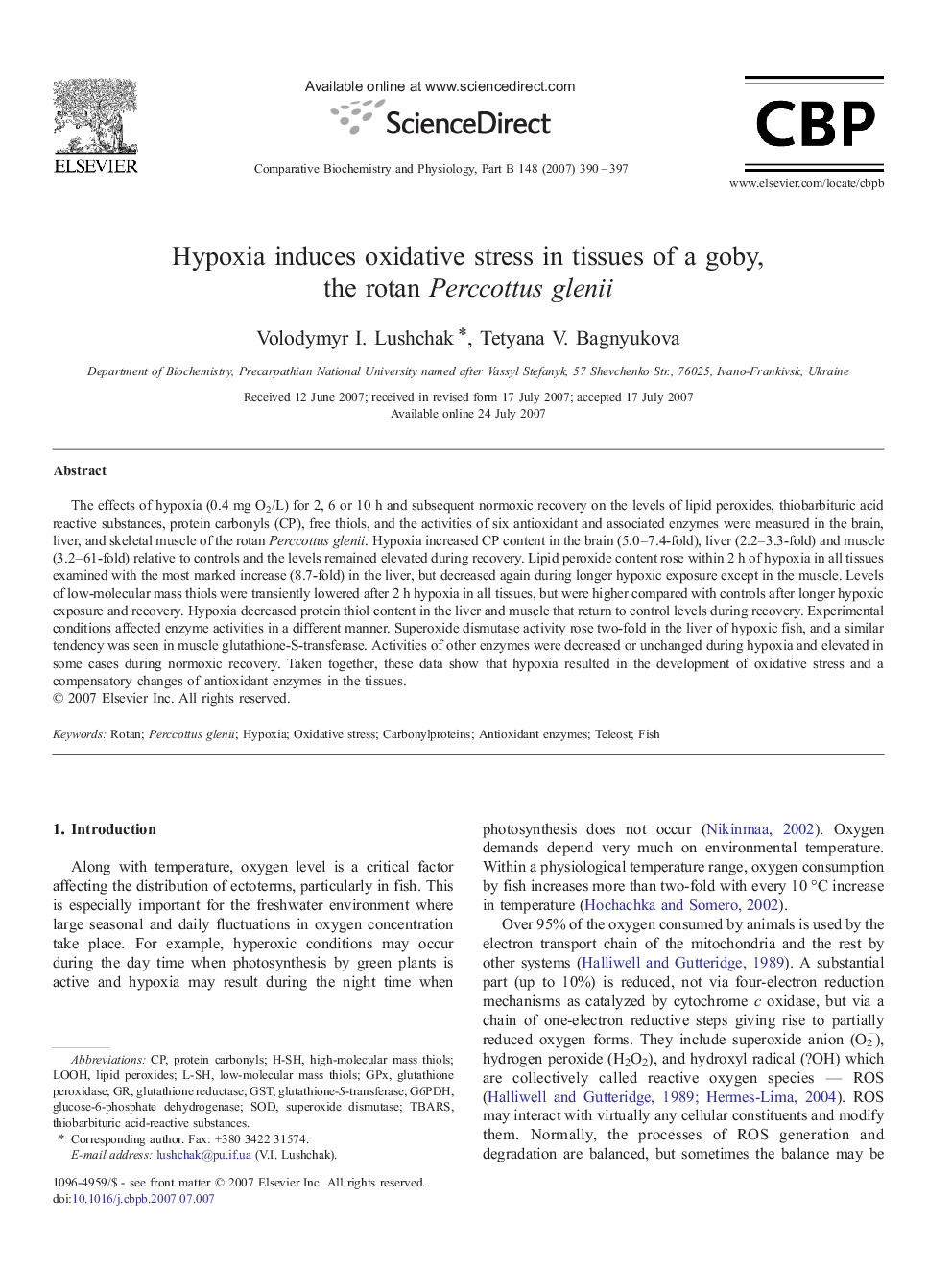| Article ID | Journal | Published Year | Pages | File Type |
|---|---|---|---|---|
| 1976529 | Comparative Biochemistry and Physiology Part B: Biochemistry and Molecular Biology | 2007 | 8 Pages |
The effects of hypoxia (0.4 mg O2/L) for 2, 6 or 10 h and subsequent normoxic recovery on the levels of lipid peroxides, thiobarbituric acid reactive substances, protein carbonyls (CP), free thiols, and the activities of six antioxidant and associated enzymes were measured in the brain, liver, and skeletal muscle of the rotan Perccottus glenii. Hypoxia increased CP content in the brain (5.0–7.4-fold), liver (2.2–3.3-fold) and muscle (3.2–61-fold) relative to controls and the levels remained elevated during recovery. Lipid peroxide content rose within 2 h of hypoxia in all tissues examined with the most marked increase (8.7-fold) in the liver, but decreased again during longer hypoxic exposure except in the muscle. Levels of low-molecular mass thiols were transiently lowered after 2 h hypoxia in all tissues, but were higher compared with controls after longer hypoxic exposure and recovery. Hypoxia decreased protein thiol content in the liver and muscle that return to control levels during recovery. Experimental conditions affected enzyme activities in a different manner. Superoxide dismutase activity rose two-fold in the liver of hypoxic fish, and a similar tendency was seen in muscle glutathione-S-transferase. Activities of other enzymes were decreased or unchanged during hypoxia and elevated in some cases during normoxic recovery. Taken together, these data show that hypoxia resulted in the development of oxidative stress and a compensatory changes of antioxidant enzymes in the tissues.
